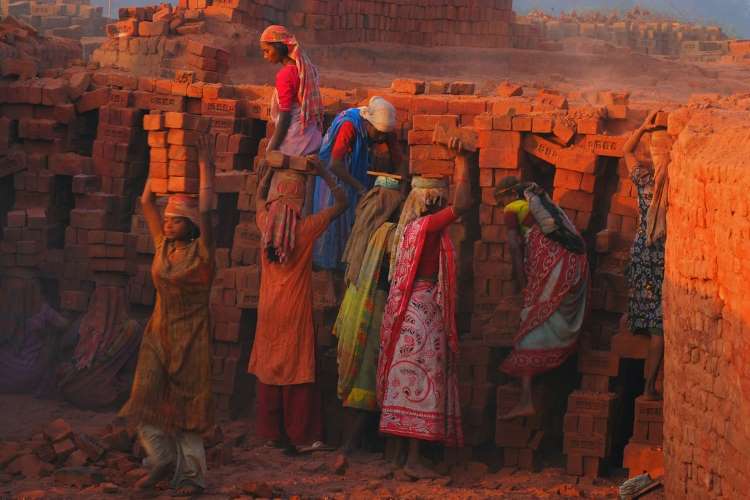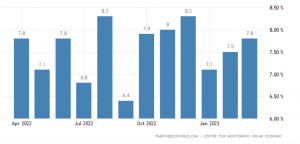
The government expects work demand under the Mahatma Gandhi National Rural Employment Guarantee Scheme (MGNREGS) will drop in the current financial year due to an uptick in economic activity. The government has installed an electronic attendance system for MGNREGS which is also expected to reduce fake attendance and thereby reduce the number of people enrolled in the programme.
With an expected drop in enrolment, the government has also slashed the labour budget by nearly 30% to 2,120 million from last year’s 2,902.4 million in the last financial year. Even then, if work demand surges due to any circumstance, the government is prepared for that situation as well, Finance Minister Nirmala Sitharaman said recently.
A higher enrolment in MGNREGS has a direct correlation with the economic situation of the country. For example, the scheme proved to be beneficial not just for rural workers, but migrant labourers as well especially during the Covid-19 pandemic which saw large-scale reverse migration. In fact, it was during the time of great distress that the budget allocation for the scheme was at its highest. The scheme was ramped up during the first lockdown, and was given an outlay of Rs 1.11 lakh crore. At that time, it provided a critical lifeline for a record 11 crore workers.
READ | Digital India Act: Govt must earn the trust of stakeholders
With the economy returning to normal, this form of employment guarantee or safety net for the country’s poorest rural households has lesser takers. The demand for work under MGNREGA rose to record high levels during the pandemic years with about 8.55 crore households demanding MGNREGA work in 2020-21. The next year saw this number falling slightly to 8.05 crore. This was a significant jump from 6.16 core households seeking work in the pre-pandemic year 2019-20.
According to the Economic Survey 2022-23, 6.49 crore households demanded work under MGNREGS. Of these, 6.48 crore households were offered employment by the government and 5.7 crore actually availed it. While Finance Minister Nirmala Sitharaman said in the Lok Sabha during the Winter Session of 2022 that the demand for jobs under MGNREGA has been declining in the recent past, it is still higher than the pre-pandemic figures.
While the International Monetary Fund has projected that the Indian economy will grow by 6.1% this year, making it the fastest among major economies, the nation’s unemployment rate is also on the rise. Unemployment stood at 7.45% in February, up from 7.14% in January. And estimates show the rate increasing to 7.80% in March, including 8.51% in urban areas. A low participation of females in the labour workforce is also a concern.
There is a little correlation between MGNREGS and higher unemployment as the former is a scheme for unskilled and rural labourers while unemployment issue is largely affecting graduates and post graduates who are unable to find suitable work due to a host of issues. The need maybe is to come up with a solution like MGNREGS for educated workers as well.
India Unemployment Rate

MGNREGS and rural employment
The Mahatma Gandhi National Rural Employment Guarantee Act (MGNREGA) was passed in 2005 to enhance the livelihood security of rural households. The demand-driven scheme MGNREGS guarantees 100 days of unskilled work per year for every rural household that wants it, covering all districts in the country except those with a 100% urban population. Recently, the central government stopped funding workers in West Bengal over suspicions of misappropriation of funds. The workers are stuck in the tussle between the state and Union governments and continue to struggle to feed themselves and their families.
Currently, 15.51 crore active workers are enrolled under the scheme with projects ranging from those related to water conservation, land development, construction, agriculture and allied works. If someone is unable to secure work under the scheme within 15 days of it being demanded, the person is entitled to a daily unemployment allowance. Additionally, the wages of unskilled workers also have to be paid within 15 days and in case of a delay, the government has to compensate them.
MGNREGS has left a positive impact on the income per household, agricultural productivity, and production-related expenditure, as well as in income diversification and infusing resilience into rural livelihoods.
There is no doubt that the ambitious employment guarantee scheme has done well in boosting the rural economy at times of distress, but several economists are of the view that the scheme can undergo polishing to make it even better. For instance, while a full 100 days of employment are guaranteed, parliamentary committees and activist groups have strongly recommended an increase in the number of guaranteed days of work per household from 100 to 150 so that rural population can have a safety net for most parts of the year.
Further, a committee of the rural development ministry has suggested that since the type of work done by agricultural labourers and MGNREGS workers was different, the minimum wage should be decided vis-a-vis the consumer price index for rural workers.
